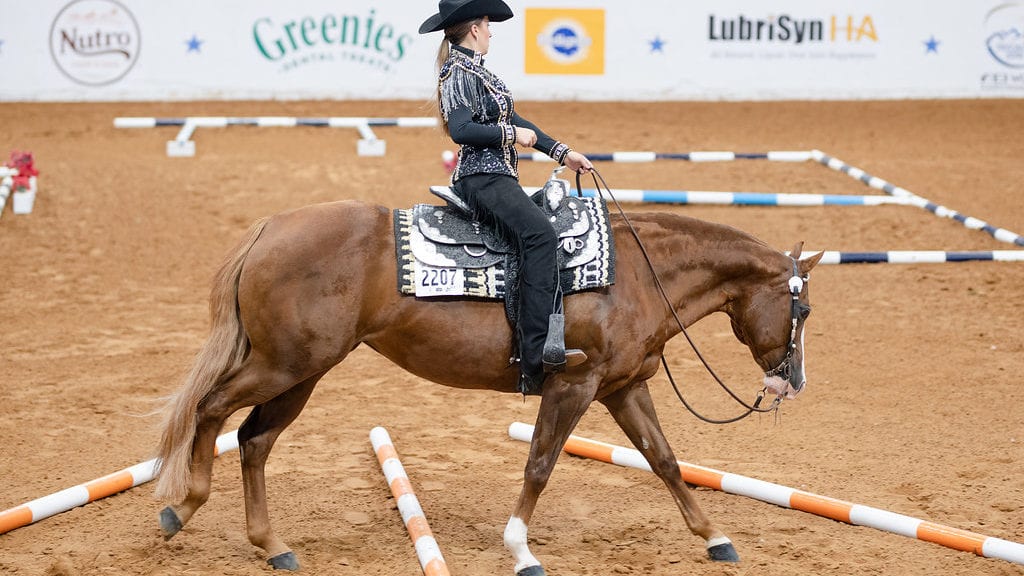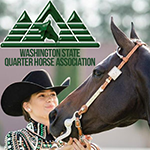Pattern classes have long been the test of the silent communication between a horse and rider. Learning to count your horse’s strides will benefit you in every pattern class, from western riding and trail to making even circles in horsemanship and equitation, and completing correct showmanship patterns.
Those who excel can guide their horses, cleanly, through courses that require balance, strength, memory, and correctness, which is needed in both the horse and rider’s body positions.
Riders must learn how to maneuver their horses appropriately through a pattern. In this article, we will explore ways to help riders find the perfect place and distances while on course. This starts at point A (or shall we say cone A)…studying the pattern on paper.
Read the pattern
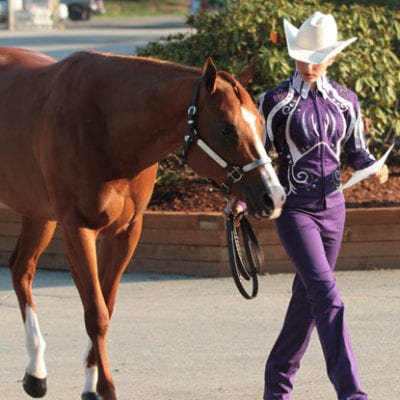 Don’t underestimate the value of reading, and re-reading, a pattern as it’s printed. Although it gives you specific maneuvers, note that this serves as an outline of the pattern you will have to complete – whether it’s showmanship, trail, western riding, horsemanship, or equitation. A visual is always helpful, but the need to visualize a pattern is something seasoned riders have a habit of getting away from.
Don’t underestimate the value of reading, and re-reading, a pattern as it’s printed. Although it gives you specific maneuvers, note that this serves as an outline of the pattern you will have to complete – whether it’s showmanship, trail, western riding, horsemanship, or equitation. A visual is always helpful, but the need to visualize a pattern is something seasoned riders have a habit of getting away from.
Add emphasis to the word outline. A pattern on paper tells you what is required of your ride and what you will be scored on.
Michelle McCarthy Warda, an AQHA Professional Horsewoman, explains her approach to pattern classes. “I have my clients start by analyzing the pattern on paper and recognizing elements that you and your horse excel at and maybe elements that may challenge you. Create a plan to highlight your strengths and minimizing your weaknesses. Then, practice and execute your plan.”
Use your space
Laying out the pattern in the arena should be calculated based on your horse’s size and stride. This is valuable in all pattern classes. Examples are listed below.
 Western riding: This class is all about filling the space of the arena and maintaining a forward, even stride for the entire class. There are rules on how many feet the spaces between cones have to be, which can be found in association rulebooks. In this class, the horse must change leads directly to the center of the cones; yes, that means counting strides. The time at which you cue the horse for a lead change depends on the count at which its stride will fall in the middle of the cones. Practice. Then practice again and again.
Western riding: This class is all about filling the space of the arena and maintaining a forward, even stride for the entire class. There are rules on how many feet the spaces between cones have to be, which can be found in association rulebooks. In this class, the horse must change leads directly to the center of the cones; yes, that means counting strides. The time at which you cue the horse for a lead change depends on the count at which its stride will fall in the middle of the cones. Practice. Then practice again and again.
Lead changes are a maneuver that, when done correctly, are completed in a lateral motion while keeping the head, shoulders, and hip in line with each other. The western riding course is designed to highlight that proper motion with long straight lines for lead changes, but also the challenge of maneuvering a line of cones. The best advice about western riding is to ‘use the entire arena.’ Give yourself room to make straight lines throughout the course.
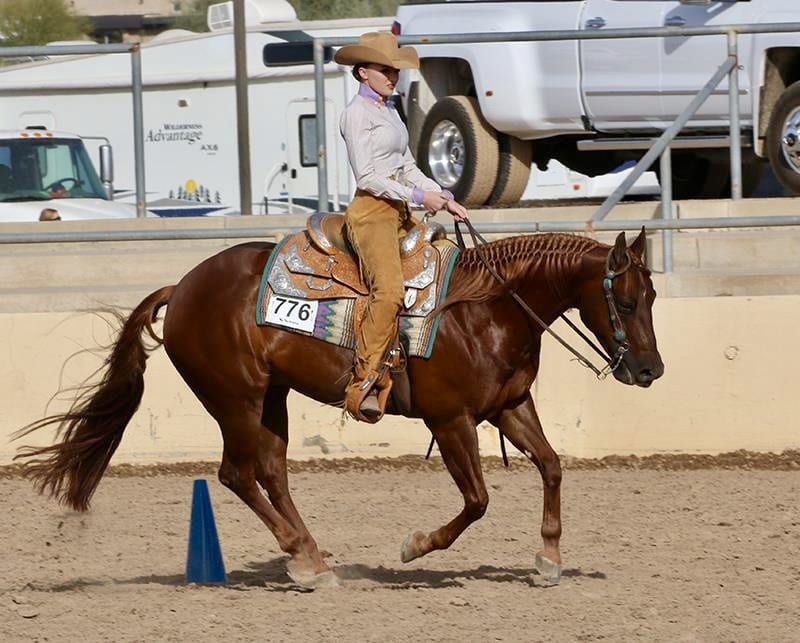 Equitation and horsemanship – A common mistake in both of these classes is changing the distance between the horse and the cone at every marker. This is an excellent way to cause a pattern to look messy and not thought out. As a rider, your goal should be to maneuver a pattern with a predetermined confidence. Consistency is a highly rewarded feature. Don’t feel confined within a pattern and forced to hug cones. Again, use your arena space and what is appropriate for your horse.
Equitation and horsemanship – A common mistake in both of these classes is changing the distance between the horse and the cone at every marker. This is an excellent way to cause a pattern to look messy and not thought out. As a rider, your goal should be to maneuver a pattern with a predetermined confidence. Consistency is a highly rewarded feature. Don’t feel confined within a pattern and forced to hug cones. Again, use your arena space and what is appropriate for your horse.
Showmanship: Showmanship is among the most detail-oriented of classes, and, again, cone distances are a common mistake. Most of us have stopped too close to a cone and made the 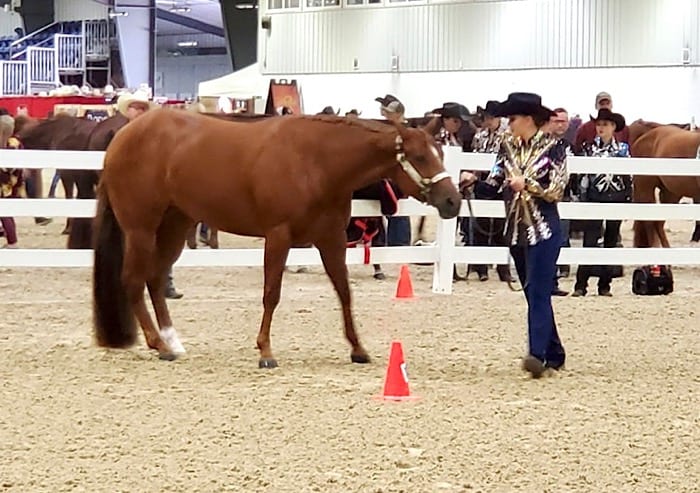 mistake of having to walk on the outside of the cone or ‘tuck your toes.’ If you haven’t done it, you’ve seen it. A safe reminder is to stay a horse length and two steps from any cones you have to turn beside. The proper body position for a pivot is your right shoulder in line with the horse’s muzzle, which means the space required to turn is a horse length plus you. Be aware of how the pattern is set about your ring steward and arena. Sometimes, exhibitors have to make adjustments.
mistake of having to walk on the outside of the cone or ‘tuck your toes.’ If you haven’t done it, you’ve seen it. A safe reminder is to stay a horse length and two steps from any cones you have to turn beside. The proper body position for a pivot is your right shoulder in line with the horse’s muzzle, which means the space required to turn is a horse length plus you. Be aware of how the pattern is set about your ring steward and arena. Sometimes, exhibitors have to make adjustments.
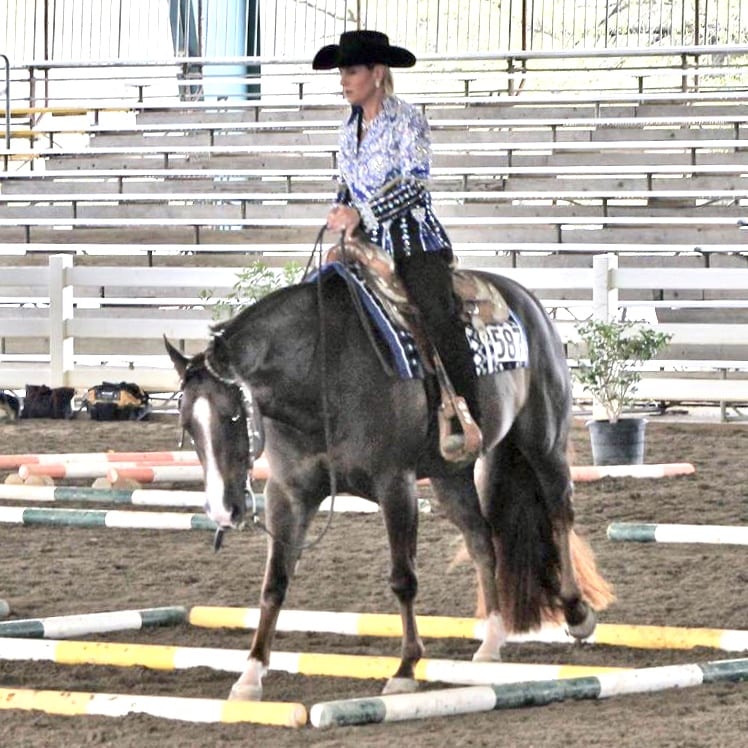 Trail: Trail combines many of the tips already discussed. Using the entire space allotted plays a vital role in successfully maneuvering poles. In many cases, trail patterns and elements within the pattern are set small to add difficulty. The amount of space you have available becomes that much more valuable.
Trail: Trail combines many of the tips already discussed. Using the entire space allotted plays a vital role in successfully maneuvering poles. In many cases, trail patterns and elements within the pattern are set small to add difficulty. The amount of space you have available becomes that much more valuable.
As a general guideline, remind yourself that your horse’s gait should not need to change over poles. If the horse has to reach or chip-in, you aren’t hitting the right spot on the poles. Once you find it, remember to find a marker on each pole in the same place to aim for. Walking the pattern, when available, is a great way to find those spots. Again, knowing your horse’s distance and counting strides is a significant part of a successful pattern.
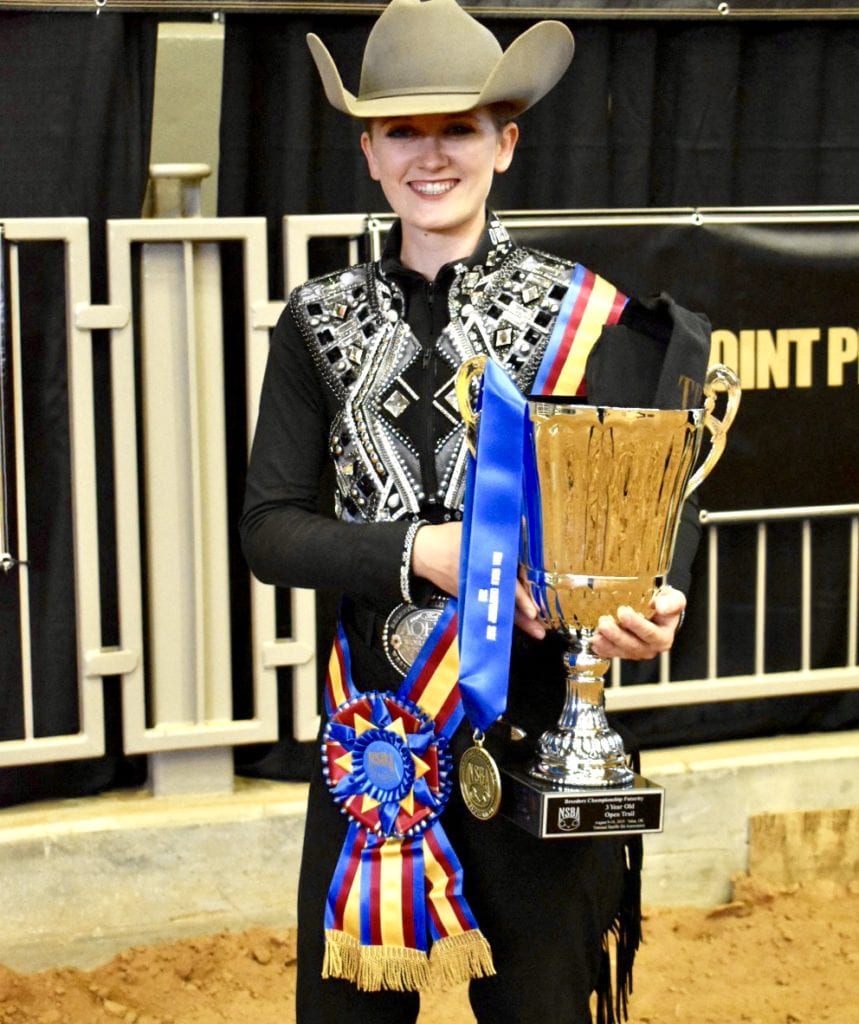 Another AQHA Professional Horsewoman, Carli Pitts offered her perspective on trail and western riding by highlighting points from above. “I always study my trail patterns and make sure I know exactly where I want to be in the arena in ‘a perfect ride’ while realizing I won’t have a perfect ride. I have to be prepared to change plans if necessary. I also remember that each obstacle is scored separately, but each maneuver relies on the other. By that, I mean, if you have a terrible transition, the next obstacle will most likely not go as planned. I also like to make sure I know where I’m at in the arena at all times. It’s easy to get lost in a trail pattern.”
Another AQHA Professional Horsewoman, Carli Pitts offered her perspective on trail and western riding by highlighting points from above. “I always study my trail patterns and make sure I know exactly where I want to be in the arena in ‘a perfect ride’ while realizing I won’t have a perfect ride. I have to be prepared to change plans if necessary. I also remember that each obstacle is scored separately, but each maneuver relies on the other. By that, I mean, if you have a terrible transition, the next obstacle will most likely not go as planned. I also like to make sure I know where I’m at in the arena at all times. It’s easy to get lost in a trail pattern.”
“For western riding, the same idea applies. I like to try and use the entire arena. It will make for a smoother and more effortless pattern.”
Look ahead
 A rider will never be consistent throughout a pattern or use space without finding that space first. Looking ahead between maneuvers buys you mental time to seek out the area you want to take and plan for the next maneuver. It also gives you time to react.
A rider will never be consistent throughout a pattern or use space without finding that space first. Looking ahead between maneuvers buys you mental time to seek out the area you want to take and plan for the next maneuver. It also gives you time to react.
A general rule to remember is looking forward into your pattern about 45 degrees unless, of course, you are on a straight line. And not just 45 degrees, you should be looking at the exact spot you want to hit in the dirt (preferably something beyond the dirt…eyes up!), over a pole or near a cone. As you approach that spot, you should be looking to the next.
Set up for success
Patterns in any discipline are challenging. They take years of practice and patience. Despite what level you are at, you will have to use these same tips to ensure you are hitting your marks. Study the pattern, use your space, and look ahead. Combining these efforts makes for a consistent and purposeful pattern. Most importantly, it sets you up for success.


